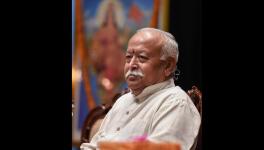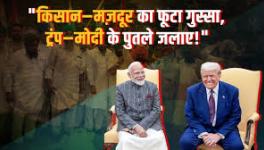61 Years Ago on This Day, Dr Ambedkar Paved a New Path

On Vijayadasami every year, lakhs of people visit Nagpur in Maharashtra to mark the day in 1956 when Dr B.R. Ambedkar along with 5 lakh people adopted Buddhism, leaving behind the Hindu fold that treated them as ‘untouchables’.
On the occasion, Buddhists gather here from all over the world, and special trains are run in the country to take people there.
Nagpur is also the head quarters of the Rashtriya Swayam Sevaks (RSS). On the same day, they also hold their annual public meeting to assert their Hindutva ideology.
Back in 1956, many had questioned Dr Ambedkar’s choice of Nagpur for the conversion, alleging it was meant to counter the hold of the RSS “battalion”.
It is in this context that we take a look at the speech Dr Ambedkar delivered the day after the conversion.
“Our work is so great that even one minute in a lifetime cannot be wasted. I don't have enough time to make an ill-omen for others by scratching my nose!” he said.
He added that Nagpur was originally the city of the Nagas, who were followers of Buddhism and fierce opponents of the “Aryans”. Responding to the critics who had questioned the conversion, Dr Ambedkar reiterated that the “untouchables” would be condemned to a life of bondage and despair had they continued in Hinduism.
He says:
In this country, the situation is such that we can be kept in a hopeless state for a thousand years. As long as such conditions prevail, it is not possible to begin to produce ambition to progress. We have not been able to do anything about it by staying in the Hindu religion ... The hierarchy of the Chaturvarna is very dangerous for the progress of mankind. It is written in the Manusmriti that Shudras should do only menial services … There is profit in it for the people of the Brahmin, Kshatriya, and Vaishya castes. What of the Shudra? Can any ambition develop in the lower castes? The Chaturvarna system was not created haphazardly. It is not just a popular custom. It is religion.
With the change in religion, the Dalits also broke away from the mental slavery that the caste system imposes on the people lower down in the caste hierarchy. Due to the restrictions imposed by caste, people are rendered unable to think of life beyond the Manu-drawn boundaries.
Babasaheb Ambedkar gives a wonderful example of how caste limits our thinking: “If a Brahmin woman delivers a child, from then on her vision is on any high court judge's place which might fall vacant. If one of our sweeper women is brought to bed, her vision turns toward the place of a sweeper. Such strange arrangements the Hindu religious class system has made.”
Dr Eleanor Zelliot, who studied the Mahars of Maharashtra, said that the conversion of Dalits to Buddhism brought with it a complete change in their thinking. They no longer felt they were untouchables, inspite of the other caste Hindus still treating them so. For them, the new path, or the ‘Navayana’, led to liberation from mental slavery.
Get the latest reports & analysis with people's perspective on Protests, movements & deep analytical videos, discussions of the current affairs in your Telegram app. Subscribe to NewsClick's Telegram channel & get Real-Time updates on stories, as they get published on our website.























